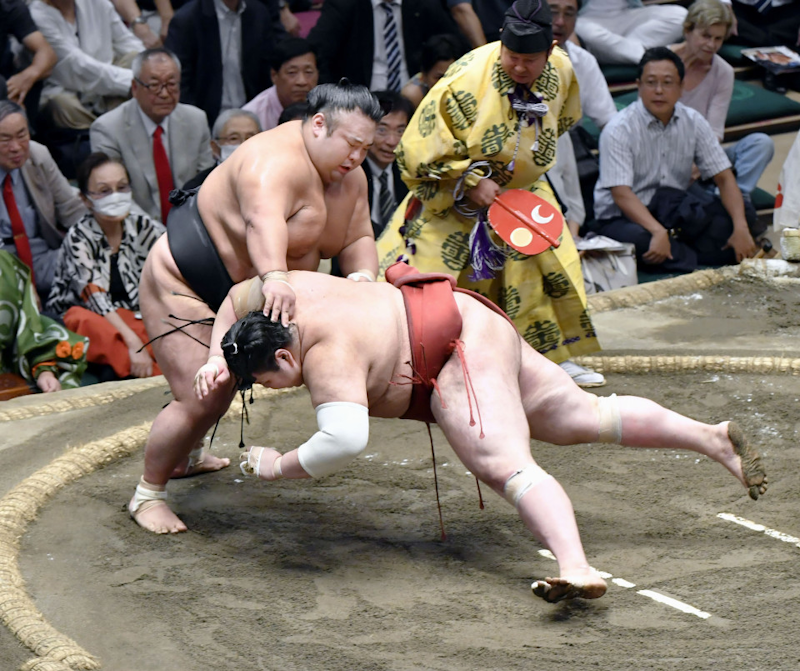The Tokyo arena was a cauldron of palpable tension, the air thick with the incense of bygone battles. It was the finale of the 2023 Aki Grand Sumo Tournament, a Sunday that promised fireworks and history. In one corner, the demotion-threatened Ōzeki, Takakeishō, grappling with destiny. In the other, the 21-year-old rank-and-file dynamo, Atamifuji. Forget the sport, it was an arena encapsulating an age-old narrative: a young buck trying to supplant the seasoned warrior.
Then it happened. A feint so swift it was like a bullet ricocheting off concrete. Takakeishō, who’d always been the epitome of bruiser sumo, sidestepped his youthful, bull-rushing opponent. Atamifuji hit the clay like a bag of hammers. The arena fell silent, and then erupted. It wasn't the tectonic clash everyone had expected, but a tactical swerve—a henka. Takakeishō took home his fourth top-level sumo title, and simultaneously lit the fuse of an age-old debate.
Ah, the henka—a word as loaded as a Korean grocer’s double-barreled shotgun during the 1992 unrest in Los Angeles. A topic that has partitioned sumo fandom like Berlin after the war. The debate takes two hues, each with its own band of vehement advocates. Some say sumo is a sport, pure and simple. Rules are the Ten Commandments here; anything within them is kosher. You fight to win, and how you do it, as long as it's within the rulebook, doesn’t matter one damn bit. Hell, if you can win while reading manga and gorging on chankonabe, then why not?
The other point of view is knottier, like trying to untangle a ball of twine with a single matchstick. This perspective drags sumo into the realm of art and philosophy. The sport is suffused with "cultural values," rooted in the bedrock of Japanese tradition. The word bandied about here is “hinkaku”—dignity. In a sport without the rigidity of a playbook, this intangible idea encourages diversity in wrestling styles while pushing rikishi to develop an ineffable pride in their art form and “fighting spirit.”
In the hierarchy of sumo, when you rise in the ranks, your brand of sumo undergoes scrutiny as if it were a shifty-eyed suspect in a lousy whodunit. Traditional wisdom whispers that some styles are superior, either in efficacy, aesthetics, or that ethereal quality—dignity. Generally, there’s a leaning towards a robust, forward-moving style, a ballet of power and kinetic grace thought to encapsulate all that’s good about Japan’s national sport. But remember, sumo isn't just about laying your soul bare in a forward charge; it’s a delicate dance of physics—of expansion and contraction, push and pull. Go too far in one direction, and you open yourself to vulnerabilities that even a novice can exploit.
Enter the henka. Some label it as treachery, a tactic that undermines the very fabric of sumo. You see, the henka is the Achilles heel for those who embody the forward-moving, cataclysmic charge. It’s a reality check, a tactic that ensures the game doesn't get lost in an extremist’s fervor. The art of the henka forces balance into a sport otherwise inclined towards forward-tilted zealotry. But it's when someone like Takakeishō, a 5’9” brick wall of a man whose reputation isn’t built on sidestepping, resorts to a henka that it feels like a betrayal, like finding out your lifelong hero is made of nothing but clay and straw.
Critics argue that a henka undermines a rikishi’s hinkaku. Their offense intensifies when the tactic comes from someone of Takakeishō's ilk—a highly-ranked individual who they believe should know better. It's like watching a great novelist churn out pulp fiction just to make a quick buck. But here's the rub: even the greats have to survive.
What gets lost in this conversation is that sumo is still a competition in which man-children blessed with bigness are fighting not just for their hearty dinners but for cushier retirements and sponsorship opportunities. It’s not a symphony or a painting; it's a battle with a winner and a loser. Takakeishō was facing demotion from his ōzeki rank, his career hanging on the precipice. In his victory over Atamifuji, he didn't just secure a title; he vindicated his decision to skip the July tournament to heal his knee injuries. "I didn't waste my time sitting out because I was able to come back here and win," he said. For Takakeishō, this wasn't just about adding another feather to his cap; this was about self-preservation.
And let's not forget, the man has garnered four top-division titles. That's more than some Yokozuna, the apex predators of this sport, have managed to capture. Kōji Kitao, for instance, never won a single championship in the highest makuuchi division. Sumo is not just about one match or one tournament; it's a long-haul flight, and you've got to keep enough chanko in the tank to reach the destination. If a henka was what it took for Takakeishō to keep flying, should we still point our fingers at him?
The henka debate is, in essence, a reflection of larger sociocultural debates around tradition versus modernity, the letter versus the spirit of the law, and individual survival versus collective values. As long as sumo exists, this debate will continue to cycle, and no one can predict when, if ever, a consensus will be reached. In the meanwhile, the sport offers an intoxicating blend of skill, tradition, and drama—a tableau where words like “henka” serve as various shades of gray on a vast, ever-changing canvas. That said, the law of nature is little different here than anywhere else: survive and advance.

